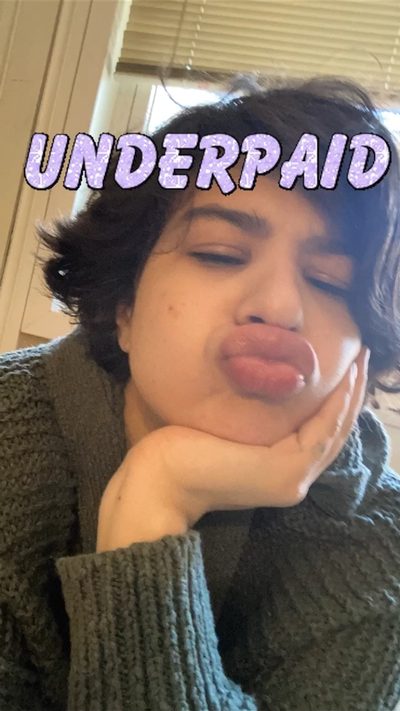
5 ways to save money on your painting practice
28·04·2021Unfortunately, making art costs money. This is pretty lame in all circumstances, but I’d argue that it’s especially lame if you’re a) starting with a new medium, b) don’t have a lot of extra income to go around, or c)both of those, which is the case with me. As I’ve developed my painting practice over the past year, I can’t help but dream about all the supplies I want, and then abruptly wake up from the dream when I remember how expensive everything is as an artist. So, with that said, here are 5 things I’ve learned to spend a little less when you’re experimenting with paint.
1. Work (or at least practice) small
I literally also just groaned. Who wants to work small?? At least, I don’t want to work small. That being said, working big has the potential to be ridiculously expensive, so I personally practice small as much as I can, and only go big for projects that I have an especially excellent feeling about. Not only are large painting surfaces pricey, but they also eat up a lot more paint than a small one, so saving those for your biggest ideas will pay off in the long run.
2. Stretch your paints as far as you’re comfortable
Okay so like, I’ve learned my lesson the hard way when it comes to preserving your paint supply. Paints?? Good ones?? Expensive!!! Now listen here, high quality supplies will make your art better. BUT, I used to buy new supplies a lot more often because I was using the paint right out of the tube, when in reality you totally don’t have to do that. It made me feel real weird at the start, but either investing in some liquid medium or just straight up using water to thin out your (ACRYLIC) paints a bit will hurt less than having to go back to the store every goddamn month to drop more paint money. Balance is the key to this, so play around and see what you think. There’s thinners for oil paint, too, but please don’t mix them with water.
3. Splurge on a high quality canvas but use them carefully
So when you’re done experimenting for now and you have this sick idea you REALLY want to make into a big ol painting, buy that badass canvas. However, I recommend practicing on a surface that’s less expensive, so that when your really sick idea comes along, you can use the money you saved by not buying a shit ton of canvases to buy a super duper nice canvas, and then put all you’ve learned to good use. Probably a better alternative than using that super duper nice canvas to do the practice and idea developing, and way less pricey.
4. Re-use your painting surfaces, especially if you’re practicing
While I’m on about my controversial canvas opinions, let me throw you this: I usually layer my new paintings on top of my old paintings. I know, that’s disgusting. But do you know what I find more disgusting? Staring at my old, nice canvases that have worked on them I thought was good at the time, but have since become the bane of my existence. I like to take photos so that I can remember what the paintings underneath looked like, but lots of my paintings are secretly on top of older, hated paintings, and no one’s called me out for it yet. Plus, I’m saving canvas money!
5. Get creative with painting tools
Brushes are definitely there, and don’t get me wrong, I’ve stacked up a lot of them over the years- but there are lots of things you probably already own that might be fun to paint with. For example, I’ve used an old plastic ruler, palette knives, tissue paper, and even my fingers to experiment with acrylic paint effects. I totally recommend seeing what you can find around the house that you can afford to cover in paint, and starting there.
I know that these are pretty miniscule in the short term, but over time these have saved me lots of money as I work to develop my painting skills. If you have any tips you’ve been using, please feel free to let me know on my instagram: @erickkasart :)
I don’t have the ability to add commenting capabilities on this site just yet, but fingers crossed I will eventually have a comments section here! Yay!